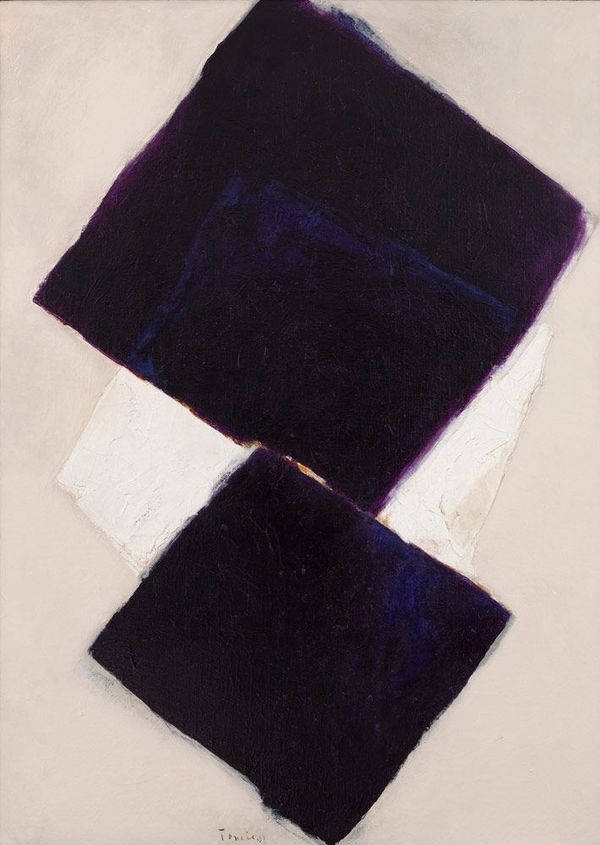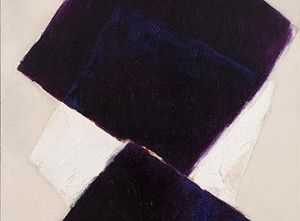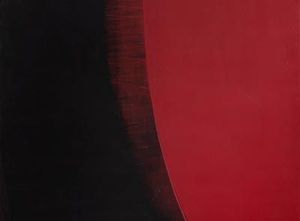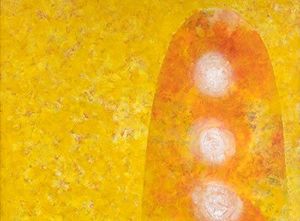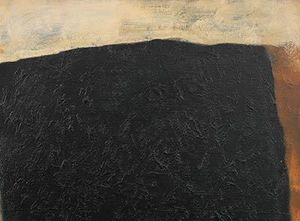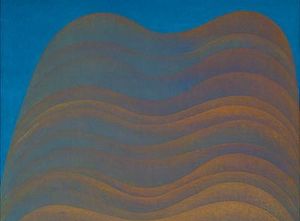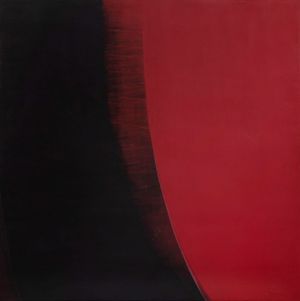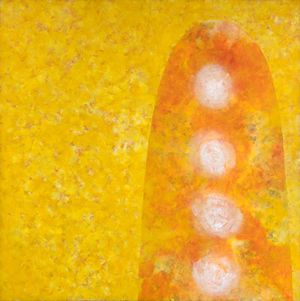Tomie Ohtake was born in Kyoto, Japan, and arrived in Brazil as an adult in 1936, after a 45-day voyage at sea. She initially came to visit her brother but ended up staying in the country and settling in São Paulo. Already married and mother of two children, she began painting at the age of 40, drawing on her domestic surroundings as a pictorial reference. At first, she produced some landscapes, and from 1954 onwards she began to research informal abstract painting, leaving aside the previous stage of her work. Throughout an extensive career, Ohtake produced paintings, watercolors, drawings, engravings and sculptures, as well as large sculptures installed in public places. Her works are reminiscent of the lightness and technical precision of Japanese art, with light brushstrokes, sober chromatic schemes and balanced compositions. The oriental aesthetic is also expressed in the importance of empty spaces, the choice of few visual elements and the absence of ornament.
Despite the great international influence of the École de Paris style of painting in the 1950s, and the proximity to gestural abstraction, popular among many Japanese-Brazilian artists, Ohtake never affiliated herself with any artistic current. She was able to build a body of work marked by simple elements and by the continual return to themes, colors and compositions throughout her production, which gives her work a strong sense of identity. What has always mattered in her work is painting as a means of representing a moment of reflection.
Ohtake has always treated the canvas as a real object, not as a simple support for images, but as a space composed of materials and textures. She created works of great physical quality, with an almost tactile texture, to deal with intangible themes such as light, balance, shadow and movement. Her highly evocative and mysterious paintings demand the viewer's attention, and generally dispense with titles, since Ohtake thought that words could distract the viewer away from the contemplation of the painting.
The artist began to attract critical attention in 1957, when some of her canvases were exhibited at Museu de Arte Moderna in São Paulo. In 1959, when she was nominated for the Leirner Prize for Contemporary Art, she was already considered an established artist in the São Paulo painting milieu, mainly recognized for the serene and reserved aspect of her work. Throughout her career Ohtake exhibited in many group and solo shows and she won several awards. She took part in five editions of the Bienal Internacional de São Paulo (in 1961, 1963, 1967, 1975, and 1996); the Venice Biennale, in 1972; the historic 1st Havana Biennial, in Cuba, in 1984; among many other biennials and major group exhibitions in Brazil and abroad. Her work is part of the collections of institutions such as the Museu de Arte de São Paulo Assis Chateaubriand – MASP; Pinacoteca do Estado de São Paulo; Museu de Arte Contemporânea da USP - MAC USP; Museu de Arte Moderna do Rio de Janeiro - MAM RJ; Instituto Itaú Cultural; and Museu Nacional de Belas Artes – MNBA, among others.
